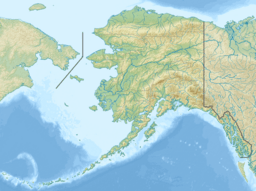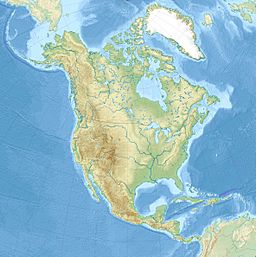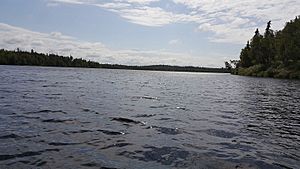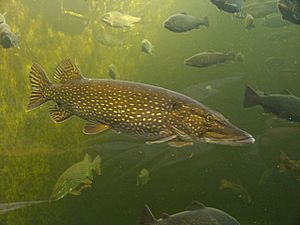Stormy Lake (Alaska) facts for kids
Quick facts for kids Stormy Lake |
|
|---|---|
| Three Bay Lake | |
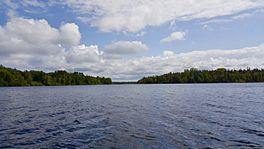
View of the lake showing the channel connecting the different sides of the lake
|
|
| Location | Kenai Peninsula Borough |
| Coordinates | 60°46′51″N 151°03′09″W / 60.78083°N 151.05250°W |
| Type | Lake |
| Primary inflows | Several small streams |
| Primary outflows | Small creek that drains into the Swanson River |
| Basin countries | United States |
| Managing agency | Alaska Department of Natural Resources, Alaska Department of Fish and Game |
| Surface area | 161.9 hectares (400 acres) |
| Max. depth | 15.2 metres (50 ft) |
| Surface elevation | 100 feet (30 m) |
| Frozen | Early winter to late spring |
Stormy Lake is a beautiful lake located on the Kenai Peninsula in Alaska. It's also known by another name, Three Bay Lake. You can find it about 27 miles north of the town of Kenai. This lake has been the focus of two big projects to remove unwanted plants and fish. The goal was to bring back the natural balance of the lake's ecosystem.
Contents
What's in a Name? The Story of Stormy Lake
Stormy Lake is part of the Captain Cook State Recreation Area. It gets its name because strong winds often blow across it. These winds can create "whitecaps," which are foamy waves on the water's surface.
The lake is also called Three Bay Lake. This is because it looks like three separate areas of water. These areas are connected by narrow channels, making it feel like three different bays.
How to Visit Stormy Lake
You can reach Stormy Lake by taking the Kenai Spur Highway. It's about 27 miles north of the town of Kenai. The lake offers many fun things to do. There's a place to launch boats, a nice spot to look out over the water, and picnic areas. You can also find a swimming area and a small campground that you can only reach by boat.
The Nature Around Stormy Lake
The land around Stormy Lake has gentle hills and some swampy spots. In the 1960s, most of the plants growing there were spruce trees, birch trees, and alder bushes. Several small streams flow into the lake, bringing fresh water. The water that flows out of Stormy Lake eventually makes its way into the Swanson River. During the colder months, the lake completely freezes over.
Protecting Native Fish and Plants
Stormy Lake has been the site of two important projects to remove species that don't belong there. These are called "invasive species."
In 2012, the lake was temporarily closed to the public. The Alaska Department of Fish and Game used a special liquid called rotenone to remove a type of fish called northern pike. These pike were not native to the Kenai Peninsula and were eating too many of the lake's natural fish. Even though pike live in other parts of Alaska, they were causing big problems here. The only way to get rid of them was to treat the whole lake.
Before the treatment, some native fish eggs were collected and taken to fish hatcheries. This helped save some of the local fish. It was also thought that coho salmon would be able to return to the lake on their own. This is because salmon travel between rivers and the ocean.
Workers used several boats to spread the rotenone. Others walked along the lake's edge with special backpacks to make sure the liquid reached shallow areas. A drip station was set up at the lake's exit. This station released potassium, which stopped the rotenone from harming other water bodies downstream.
Dealing with Invasive Plants
During the 2012 project, an unwanted plant called Elodea was also found in Stormy Lake. Different groups worked together to solve this problem. They used a plant-safe liquid called fluridone to remove the Elodea. This liquid affects plants but not fish.
The lake stayed closed for several years after these treatments. This gave the native fish a chance to recover. Dolly Varden trout and a special type of arctic char were put back into the lake. The closure also made sure the Elodea was completely gone. This prevented it from spreading to other nearby places like the Swanson River.


